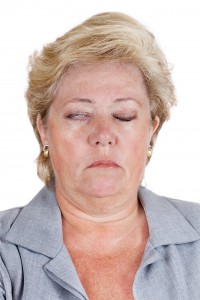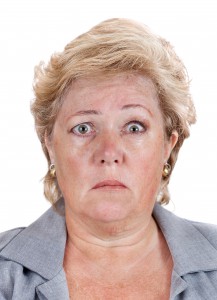Facial Paralysis
The facial nerve is the nerve of facial expression. Its primary function is motor. This is the seventh cranial nerve (nerve VII). The intermediate nerve represents its sensitivity and sensory part. The facial nerve has several features, which include motor control of the muscles of the face.
Facial paralysis results in a partial or complete loss of motor skills of one half of the face.
There are two types of facial paralysis: the peripheral facial paralysis and the central facial paralysis, according to the location of the VII nerve damage.
The central facial paralysis is caused by brain damage, such as a cerebrovascular accident (CVA), an inflammatory disease such as multiple sclerosis, trauma or a brain tumor.
The peripheral facial paralysis can be caused by infection, trauma, cyst as a cholesteatoma in the middle ear, nerve compression by a tumor of the skull base and as a result of a surgery (ear or skull base surgeries). In some cases, no cause is found: it is called idiopathic facial paralysis known as Bell’s palsy.
Bell’s palsy
It can occur at any age. The exact cause is unknown, but is believed to be the result of the swelling and inflammation of the nerve controlling the muscles of one side of your face. It may be a reaction occurring after a viral infection. Although Bell’s palsy is the most common cause of facial paralysis, fortunately complete recovery is usually in few weeks to months. The medical treatment is with cortisone and antivirals. The care of the eye on the side of the paralysis is necessary to prevent keratitis (inflammation of the cornea). An MRI is indicated in some cases.




Surgical treatment
The face recovery following a persistent facial paralysis can be accomplished by surgical techniques of varying complexity. The cause of paralysis, age and the patient desires determine the choice of technique. The most commonly used techniques are nerve grafts, dynamic muscle transfers and static suspensions. A medical and surgical eye care is essential. Facial rehabilitation through specific exercises is shown in the case of total paralysis.
At the Polyclinique Centre-Ville, there are ENT with extensive experience in the management of facial paralysis and its aftermath. Appropriate treatment for your condition will be offered and may include facial rehabilitation (physiotherapy), botulinum toxin injections (Botox) or surgery.
The type of surgery depends on several factors including the cause and duration of the paralysis and the sequelae affecting you. The surgeries offered by our professionals include nerve transfer (anastomosis) between the nerve innervating the tongue (hypoglossal nerve) and the facial nerve, muscle transfer based on the temporal muscle (muscle of mastication) according to Labbé’s approach and static suspensions.
Simultaneous care of the paralyzed eye is also important in the treatment and will be supported simultaneously.
Do not hesitate to contact us if you suffer from facial paralysis. We will be happy to offer you a personalized treatment plan according to your condition.
